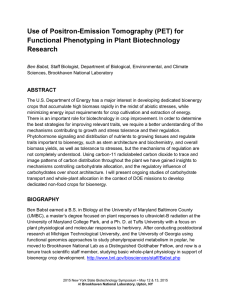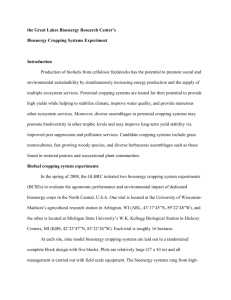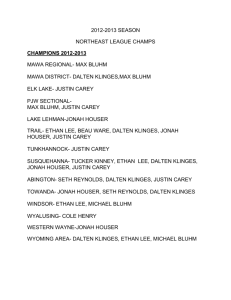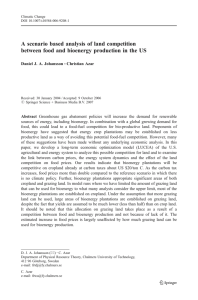story - Division of Agriculture Communications
advertisement
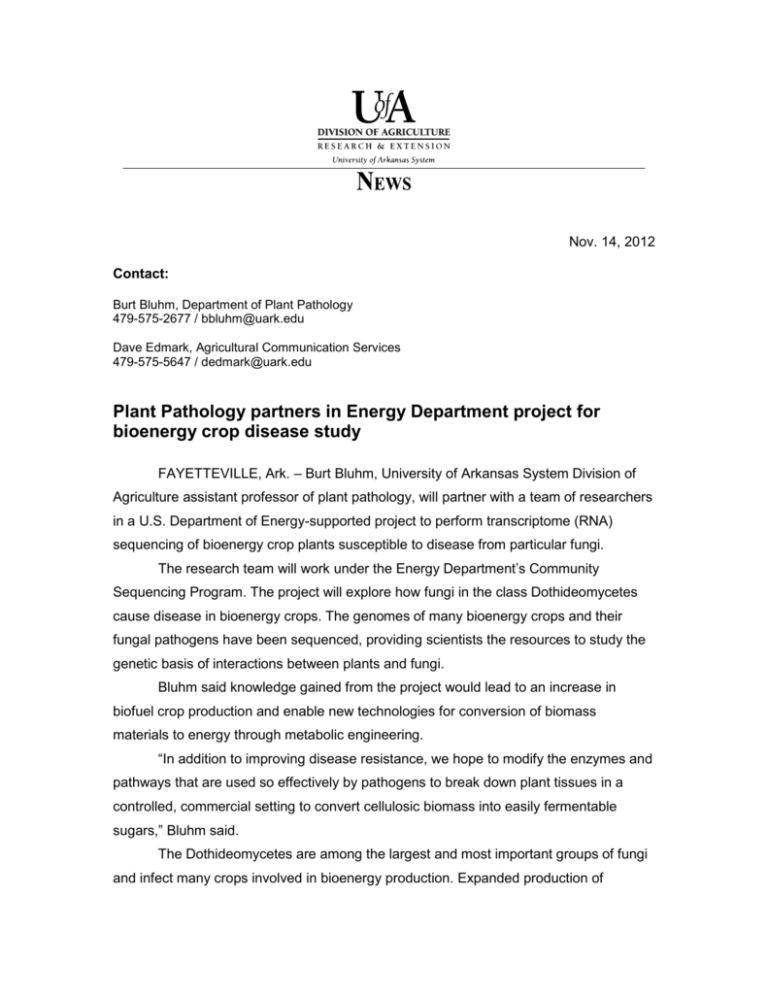
Nov. 14, 2012 Contact: Burt Bluhm, Department of Plant Pathology 479-575-2677 / bbluhm@uark.edu Dave Edmark, Agricultural Communication Services 479-575-5647 / dedmark@uark.edu Plant Pathology partners in Energy Department project for bioenergy crop disease study FAYETTEVILLE, Ark. – Burt Bluhm, University of Arkansas System Division of Agriculture assistant professor of plant pathology, will partner with a team of researchers in a U.S. Department of Energy-supported project to perform transcriptome (RNA) sequencing of bioenergy crop plants susceptible to disease from particular fungi. The research team will work under the Energy Department’s Community Sequencing Program. The project will explore how fungi in the class Dothideomycetes cause disease in bioenergy crops. The genomes of many bioenergy crops and their fungal pathogens have been sequenced, providing scientists the resources to study the genetic basis of interactions between plants and fungi. Bluhm said knowledge gained from the project would lead to an increase in biofuel crop production and enable new technologies for conversion of biomass materials to energy through metabolic engineering. “In addition to improving disease resistance, we hope to modify the enzymes and pathways that are used so effectively by pathogens to break down plant tissues in a controlled, commercial setting to convert cellulosic biomass into easily fermentable sugars,” Bluhm said. The Dothideomycetes are among the largest and most important groups of fungi and infect many crops involved in bioenergy production. Expanded production of bioenergy depends on a stable supply of plant biomass, which will be threatened by plant diseases as acreages of biofuels crop increase, Bluhm noted. “With the available sequence information we are ready for the detailed analyses that will lead to a complete understanding of host-pathogen interactions for improved control of plant diseases and increased production of bioenergy crops,” Bluhm said. Maize is the nation’s number one crop for bioethanol production and the gap between supply and demand is widening, which will make a huge production increase necessary. Diseases such as gray leaf spot and northern and southern corn leaf blights are constraints that must be managed effectively to ensure continued bioethanol production. “We cannot afford another major outbreak, such as the southern corn leaf blight epidemic that destroyed more than 15 percent of the U.S. corn crop in 1970,” Bluhm said. “For sustainability, the production per unit of area must be secured. Our research project significantly contributes to this global strategy by protecting crops from biomassreducing fungi. This project presents a timely opportunity to harness the collaborative expertise of scientists who have proven records in genome analysis.” Other participants in the project are Gert H.J. Kema, Wageningen University, the Netherlands; Stephen B. Goodwin, Purdue University; Gillian Turgeon, Cornell University; Yong Gu. USDA-ARS, Albany, Calif.; Thierry Marcel, INRA, France; MarcHenri Lebrun, INRA, France; Uta Paszkowski, University of Lausanne, Switzerland; Eva Stukenbrock, Max Planck Institute, Germany; Shaobin Zhong, North Dakota State University, and Igor Grigoriev, U.S. Department of Energy-Joint Genome Institute. PHOTO (Bluhm02.jpg): Burt Bluhm News releases and photos are available online at http://arkansasagnews.uark.edu/392.htm
